

























Embarking on the open water is an exhilarating experience, flled with the promise of adventure and relaxation. Whether you’re a seasoned sailor or a weekend cruiser, protecting your vessel with proper insurance is not just a choice—it’s a necessity. Explore the reasons why every boat owner should prioritize boat insurance for a worry-free voyage.
The open water can be unpredictable, with unexpected storms, collisions, or other potential accidents. Boat insurance can give you fnancial protection if there is damage to your vessel, providing coverage for repairs or replacement.
Accidents on the water can result in damage to other boats, docks, or even injuries to passengers. Boat insurance offers liability coverage, which can pay for damages or injuries you’re liable for while boating, up to specifed limits, and lawsuit costs if you’re sued. This includes damage you cause to another watercraft or if someone on or near your boat is injured and you’re found to be legally responsible.
Unfortunately, boat theft and vandalism are realities that boat owners face. Boat insurance has comprehensive and collision coverage that can protect you against events outside of your control, including theft and vandalism.
Accidents on the water may lead to injuries for you or your passengers. Boat insurance offers a range of optional medical payments coverage limits, helping to cover medical expenses if you are in an accident or someone is hurt on your boat, regardless of fault.
If you fnanced the purchase of your boat, most lenders require insurance coverage to protect their investment. Having boat insurance not only fulflls these requirements but also gives you peace of mind knowing that your fnancial interests are safeguarded.


Some water municipalities and marinas may require proof of insurance for docking or accessing certain areas. Boat insurance allows you the fexibility to explore different destinations without worrying about entry restrictions.
Emergency towing and assistance
Progressive boat insurance can include optional Sign & Glide® On-Water Towing coverage. If your boat is disabled or breaks down on the water, Sign & Glide® pays for on-water towing, jump starts, soft un-groundings, and fuel delivery.
Wreckage removal
If your boat sinks, Progressive boat insurance will cover the cost of removing your boat from the water (if removal is legally required).
Investing in boat insurance is not just about protecting a valuable asset; it’s about safeguarding the memories, experiences, and joy that come with your on-water adventures. Don’t let unforeseen circumstances disrupt your journey—navigate with confdence, knowing that Progressive boat insurance has you covered. Ensure a smooth and worry-free voyage, because when it comes to your boat, peace of mind is the ultimate luxury.
Scan to get a quote in as little as 4 minutes
learn more.





















By Ben Martin, Editor in Chief
The non-pro!t Protect Our Waters reports that, “Fish stocking has been a vital tool for maintaining healthy !sh populations in America’s lakes, rivers, and reservoirs. However, in recent years, most of our waterways have su ered from declining !sh stocks due to habitat destruction, over!shing, pollution, and climate change. If we’re going to combat these challenges, we’re going to need to ramp up our !sh stocking e orts to ensure the sustainability of recreational !shing, and food security.”
Fishing is one of America’s most popular outdoor activities, with millions of anglers heading to the water each year. e recreational !shing industry contributes over $125 billion to the economy annually and supports nearly a million jobs. Unfortunately, declining !sh populations threaten our industry, leading to fewer opportunities for anglers and reduced economic bene!ts for communities that rely on !shing tourism.

but also sustains the businesses like as bait shops, tackle manufacturers, and guide services that depend on a thriving !shery. Additionally, if we’re going to
can lead to an imbalance in the food chain. Stocking e orts can help restore native species in waters where they have declined, preventing the dominance of invasive species that may outcompete them.
While recreational !shing is the primary focus of most stocking programs, increased stocking can also support food security. Stocked !sh provide a renewable source of protein for both commercial !sheries and subsistence anglers.
Enhanced !sh stocking e orts can help mitigate the negative impacts that we’re seeing by introducing hybrid climate-resilient strains of !sh, e technology is there, we just have to use it. Without proactive stocking and conservation e of our favorite species of dramatic declines in the coming decades.

By increasing !sh stocking e orts, states could easily replenish popular game !sh species like red!sh, $ounder bass, trout, walleye, and crappie, ensuring that anglers have plenty of !sh to catch. is not only keeps !shing enthusiasts engaged
encourage a younger generation of anglers to be passionate about this wonderful pastime, they’ve gotta be able to catch !sh.
Many ecosystems are under constant pressure from habitat degradation, invasive species, and pollution. In some cases, native !sh populations struggle to maintain healthy numbers, which

America’s !sh stocking programs could and should play a critical role in maintaining healthy !sh populations, supporting the economy, preserving ecosystems, and enhancing food security. With increasing environmental and economic pressures threatening it’s time for a signi!cant investment in stocking e orts. By expanding hatcheries, improving stocking strategies, and integrating habitat conservation e orts, America can ensure that its waters remain abundant with !sh for generations to come.
Protect Our Waters is an angler-sponsored, nonpro!t organization with it’s primary focus on the sustainability and enhancement of recreational !shing. Learn more at ProtectOurWaters.com.


















There are many reasons why the beautiful, deep-water queen snapper has made its way to the top of many anglers’ bucket lists. Not only is this !sh unique and stunning in appearance, but the quality of !llets it produces tops the scale of other snappers.
Most !sh that are harvested from the deeper, cooler waters, as with queen snapper, tend to yield higher quality table-fare. With the thick white meat on these !sh, that can grow over twenty pounds, targeting this species is a foodie’s delight.
Queen snapper can be found from 400 to 1,600 feet of water, spawning year round, with schools constantly on the move. Although they can be targeted over ledges and deep-sea coral beds within these depths, it’s not common to catch one as bycatch while not speci!cally intending to target them. As with most !sh with a penchant for these depths, research is scarce, with !shermen providing the majority of information on their observed behavior. at being said, targeting this species will be more productive with an experienced guide, rather than going it alone and winging it.
If you are a part of the DIY deep-dropping explorers club, and looking to add queen snapper to your hunt, you’re probably going to want to make a few di erent rigs for them.
An electric reel setup is recommended for this type of !shing. Not only due to the depths you are trying to reach, but you may only get short
By Capt. Quinlyn Haddon
dri%s over where you need to be before its time to reset.
e standard drop LEDs and lights should be used the same as with other deep-drop methods. Utilizing a heavy mono!lament leader line of approximately 300 pounds, a x your !ve drop lines at varying distances from each other. You may !nd you get bites higher up in the water column on certain days, making an extremely long leader more productive in !nding the !sh, especially on a !rst dri%. e drop lines should be decorated with your choice of glowing fandangles, whether it be glow wraps, rubber squids or the simple glow beads. Circle hooks ranging from 7/0 to 10/0 are e ective, and if you choose to put a variety of sizes on a single rig, the larger hooks should be at the bottom of the line.

this type of !shing is new to you, pepper in a few chunks of skin-on bonita in your presentation.
If you happen upon your queen snapper territory and !nd yourself in conditions without much current, you can also attempt to catch them with a heavy slow pitch jig. As long as you have light braid and a heavy jig to get to the bottom, and the energy and tenacity to retrieve it again, this is a productive method in extremely light current.
Once you start catching !sh, you may !nd they are consistently eating the bottom hook or the top hook, you can then play around with switching your rig to a longer or shorter leader.
e ideal go-to bait for queens is squid, but since this is a so%er bait, its easier to miss the bite. If
Queen snapper can be found deep in the gulf, and in the Atlantic from North Carolina to Brazil. While they have hot spots in the Bahamas and deep within the Gulf, e Atlantic waters of e Florida Keys o ers the best opportunity to target these within the United States and with the most minimal travel time. With mahi season around the corner in the Florida Keys, this is a great time to start heading o shore for queen snapper, as it provides a chance to target mahi to and from the deep-drop spots. Give me a call to get out there!
Capt. Quinlyn Haddon guides with Sweet E’Nuf Charters out of Marathon, e Florida Keys. (504) 920-6342. www.captainquinlyn.com; IG: @captainquinlyn


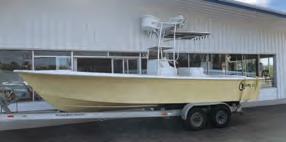

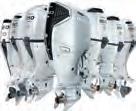

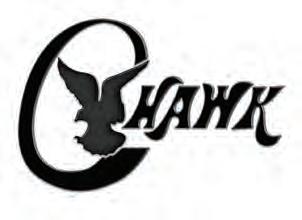

For anyone looking to build the best rod you’ll ever !sh, All-In-One Rod Building Kits from Mud Hole Custom Tackle are the ideal starting point. All-In-One kits take all the guesswork out of building a !shing rod, making it easy and enjoyable. Whether casting, spinning, y, or even ice, Mud Hole has everything you need for the perfect performance !shing rod and to start a lifetime of custom building.
Mud Hole’s All-In-One Rod Building Kits make it simple. Each kit includes everything you need—rod blank, guides, reel seat, grips, thread, and even the tools and supplies for assembly. With everything already preselected and packaged together, beginners don’t have to worry about picking out matching components and determining which supplies and tools are needed—all the work has been done by their professional builders.
Plus, Mud Hole provides all of the instruction required to build your !rst !shing rod. Kits include an easy-to-follow instruction book, and Mud Hole is the world’s largest source of free online rod building education material and content. ere’s nothing like catching a !sh on a rod you built. And All-In-One Rod Building Kits from Mud Hole Custom Tackle are the perfect way to get started in this time-honored cra$.

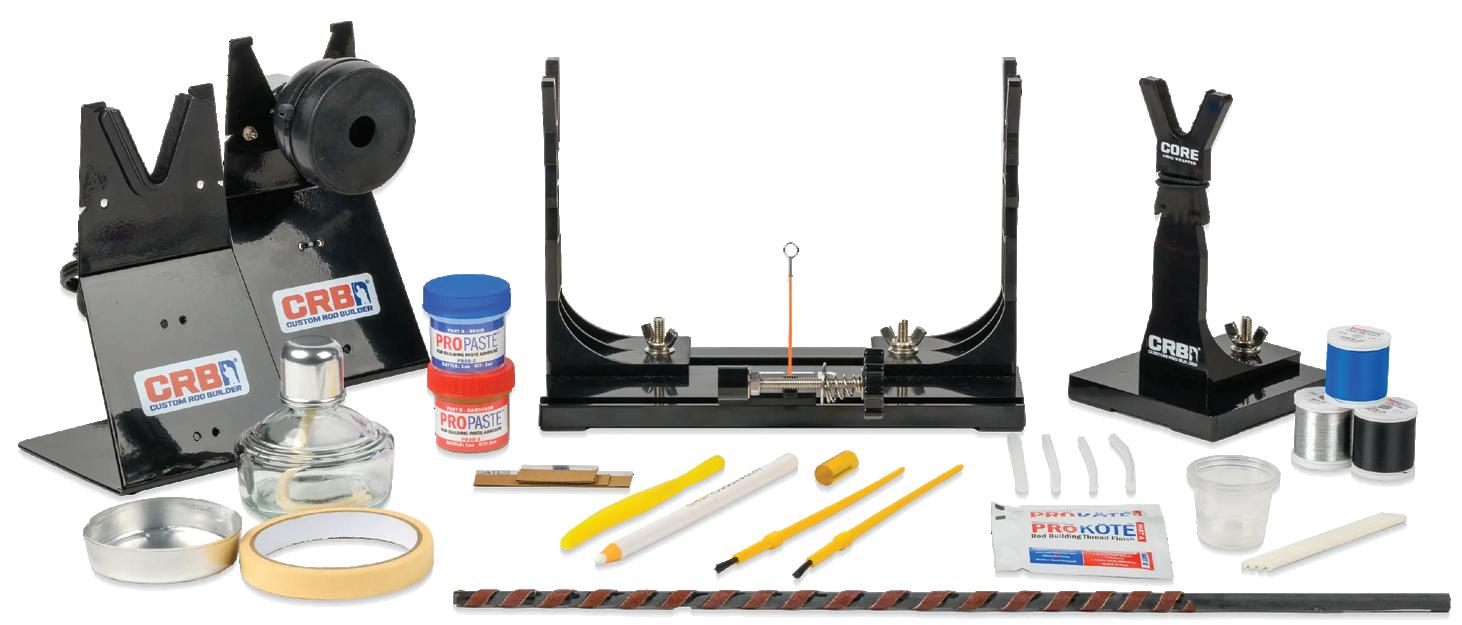


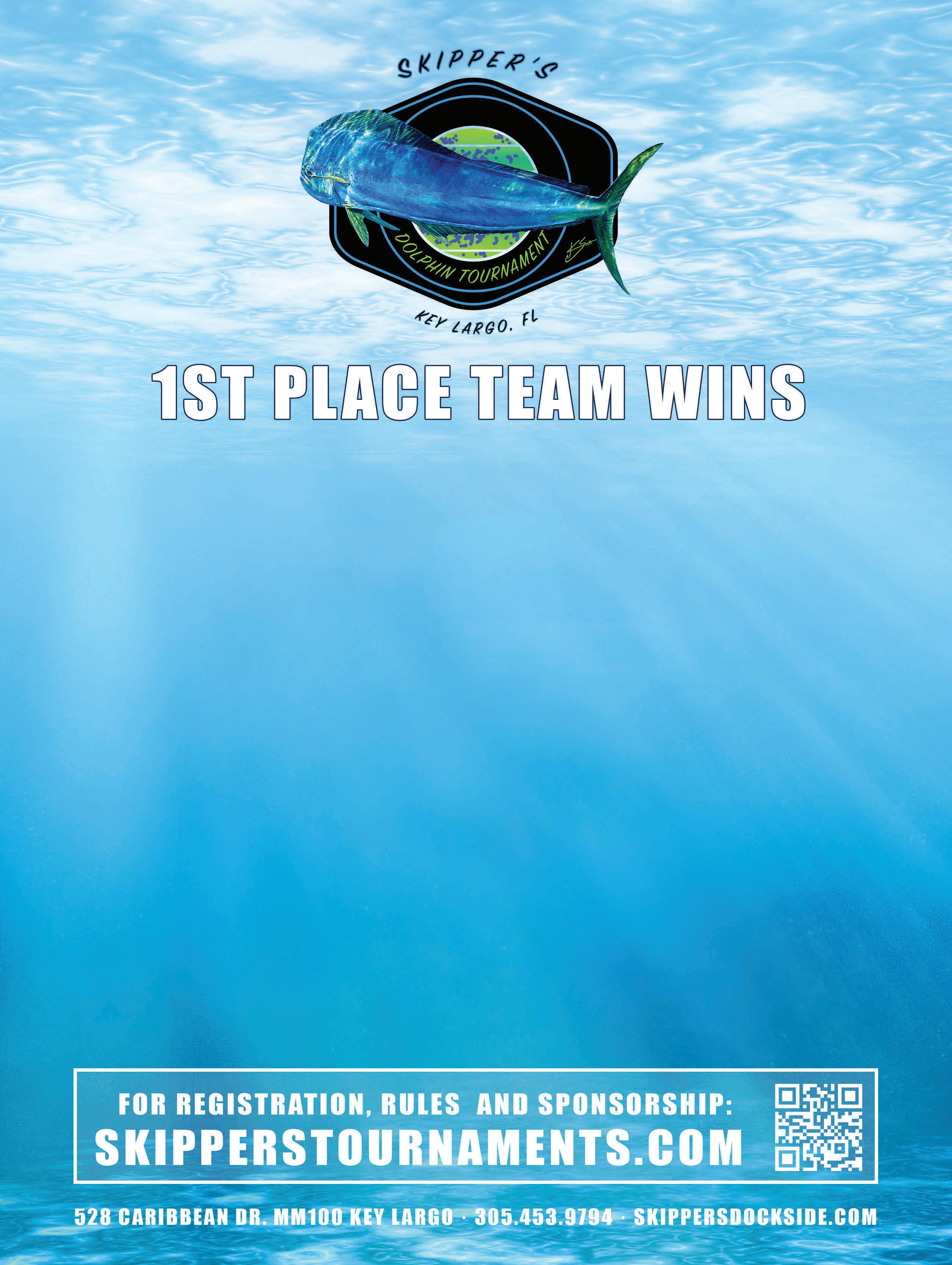

By Ben Bailey
Trout anglers are about the most optimistic people I know. I figure it probably has something to do with the cold water around their feet pulling the heat away from their brains, or maybe just the tranquil beauty of the trout streams that evokes good and pleasant thoughts. It seems to me that Jesus Himself had a tender spot for anglers. He had several in his inner circle and if you remember, the morning He called them ashore for breakfast, He already had fish baking on the coals. I have often wondered how He caught them. Was it a dry fly or nymph? Or did He simply command them to flop up on the bank? But before He did that, He directed a whole boatload into the disciples’ net. They didn’t need all those fish for breakfast. That, my friend, was an angler’s dream made to come true by the God of Creation.
What I experienced Memorial Day 2009 was, in many ways, very similar. Joe Woody and I had canoed in from Cable Cove the day before. We camped at Proctor, enjoyed a pleasant supper and campfire, and rose early, anticipating a good day’s fishing. The weather was perfect but then, there’s no such thing as bad weather on Hazel Creek. Joe is by far, the better angler of the two of us, but we both share a like-mindset to fish the headwaters and go where few people ever go. With that in mind, we set out up the creek, headed for Sugar Fork or Bone Valley or who knows, maybe Calhoun. We stopped occasionally to fish the most irresistible places.
Lunchtime found us at Sawdust Pile. We sat down on a log and enjoyed
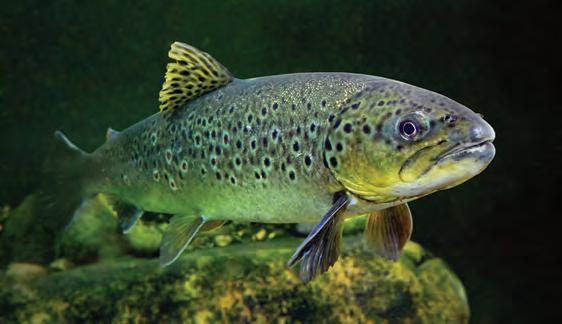
our crackers and hickory smoked tuna. It had been a very pleasant morning. Joe had caught a couple of 8-9 inch rainbows that he had squirreled away in a small fanny pack for our supper. I had not caught any keepers but had still thoroughly enjoyed myself. It’s called “fishing” for a reason! After lunch, we continued up the creek, still more intent on the headwaters but
Continued, see THE BIG BROWN OF HAZEL CREEK Page 4


unable to pass up those dark holes, pocket waters, and whitewater swirls.
Eventually, we came to what is reverently referred to, in the Hazel Creek language, as the dark hole, or by some, as the brown hole. It is a place of incredible beauty, probably 200 ft long and 75’ wide and 10 ft deep, and full of churning, rolling, sweeping whitewater that fans out into the deep, dark hole which is protected on both sides by thick rhododendron and laurel. Only the bottom one-third is wadable, the rest, a haunted place, where the faint-hearted need not go. But yet, the dark waters beckon and few can resist.
Knowing that, I could not wade nor could I cast very well in the thick rhododendron. I took my fly reel off and put on a small spin cast reel with a small gold-leafed spinner. I fished up about half way by casting between rhododendron limbs but eventually, or inevitably, I overshot the creek and hung up in a laurel bush on the other side. Not wanting to disturb the water, I broke the line. To my dismay, my tackle box yielded only an old catch-man spinner that I had probably had for 20 years. I had to add a couple of lead weights to it so that I could even cast it over the creek. I carefully fished the rest of the hole but as I had done many times before, came up empty-handed.
I climbed up on a rock where Joe had been fly-fishing the churning whitewater with the same result. “Try that spinner there,” he said, “then we’ll go on up to Sugar Fork.” I cast across the foaming torrent and began to reel the spinner back through the rushing water. I felt a light “bump,” then my line tightened. I lifted my pole to set the hook and hollered to Joe. “I’ve got one!” Joe took off his fanny-pack and unzipped it saying, “one more for supper.” About that time, my rod bent almost to the water and the drag started slipping. I hollered back to Joe saying, “I don’t think this one’s for supper!” I played him for a few minutes in the swift water. I knew I had a big fish but I still didn’t know how big. Finally, he tired a little and I was able to pull him to the calmer water. I saw a flash of ivory under the water, which
told me that I had hooked a big brown. Just as that registered in my mind, the water erupted as he danced on his tail and shook that massive head from side to side trying to throw that cursed thing that held him captive.
Back down he went, back to the safety of the swift whitewater. I dialed back the drag, trying to prevent it. My pole bent double as he swam for the bottom. I looked at Joe who, by this time, had lost all control of his lower jaw. It hung open like a broken hinge, unable to close itself. His wide eyes darted back and forth from the water to me, wanting to speak but somehow, unable to. I looked back to the water just as the fish made another frantic surge and, as it did, the pedestal of my reel just broke off, falling into the water. I could feel the line slipping through my fingers as the big brown sought his freedom.
Instinctively, I wrapped the line around my hand, once again, halting his escape. Joe jumped into the water and retrieved my broken reel. Somehow, I still don’t know how, I held the reel and pole and continued the fight. Finally, I was able to pull the exhausted brown into the calm water and up to the rock where we stood. Joe jumped down in the water and slipped a stringer through the big brown’s mouth before removing the now bent and mangled lure. I picked up my prize and held it in my arms. I had won the battle, but it had been a challenge!
This was a noble creature that I had been privileged to do battle with. He did not belong on a wall- he belonged here in the dark hole. I gently placed him back in the water and watched as he angled, once again, for the protection of the whitewater and the depth of the black hole. I marked his length on my rod…28 inches it measured when I got back to my truck. We went on that day, up to Sugar Fork and caught other fish, enjoying ourselves to the fullest, but if I never caught another fish, the big brown from the dark hole on Hazel Creek, was enough. I was blessed. It was a gift from heaven, just as the boatload was to those disciples long ago.
Ben Bailey, is a native of Western North Carolina, Master Carpenter, Avid Angler, and Naturalist.


RALEIGH, N.C. (Feb. 21, 2025) – The North Carolina Wildlife Resources Commission (NCWRC) has suspended the season for harvesting striped bass by hook-and-line in the Roanoke River Management Area, which runs from March 1 through April 30, 2025. This includes the Roanoke River and its tributaries from Roanoke Rapids Dam downstream to the mouth of the river at the Albemarle Sound, as well as the Cashie, Middle and Eastmost rivers.
Despite reductions in harvest over the past three years, the Roanoke River striped bass population has shown little improvement. In 2024, NCWRC biologists observed a continuance of the declining trend in abundance of striped bass during the spawning grounds survey. Low abundance and the impacts of high mortality have resulted in poor spawning success over the past seven years, even when Roanoke River conditions were considered optimal for spawning.
NCWRC is working closely with the N.C. Division of Marine Fisheries (DMF) to address declines in the Roanoke River and Albemarle Sound striped bass stock.
“I grew up on the Roanoke River chasing striped bass, and the reductions in

this population are concerning,” said Ben Ricks, NCWRC’s Coastal Region fishery supervisor. “We are working to understand the mechanisms that have led to the decline in the striped bass populations in the Roanoke River and Albemarle Sound. We will also continue to stock striped bass this year in the lower Roanoke River and Albemarle Sound in cooperation with the DMF. We will assess stocking efficacy as striped bass return to the spawning grounds over the next three-to-five years.”

All striped bass caught in inland and joint waters of the Roanoke River Management Area, regardless of condition, shall be immediately returned to the waters where taken. From April 1 through June 30 in the Roanoke River upstream of U.S. Highway 258 Bridge, only a single barbless circle hook may be used when fishing with live or natural bait, and only a single barbless hook (either no barb or barb is bent downward) may be used with other tackle.
NCWRC will assess the next striped bass harvest season prior to the March 1, 2026 opening. For more information, visit NCWRC’s striped bass species web page.
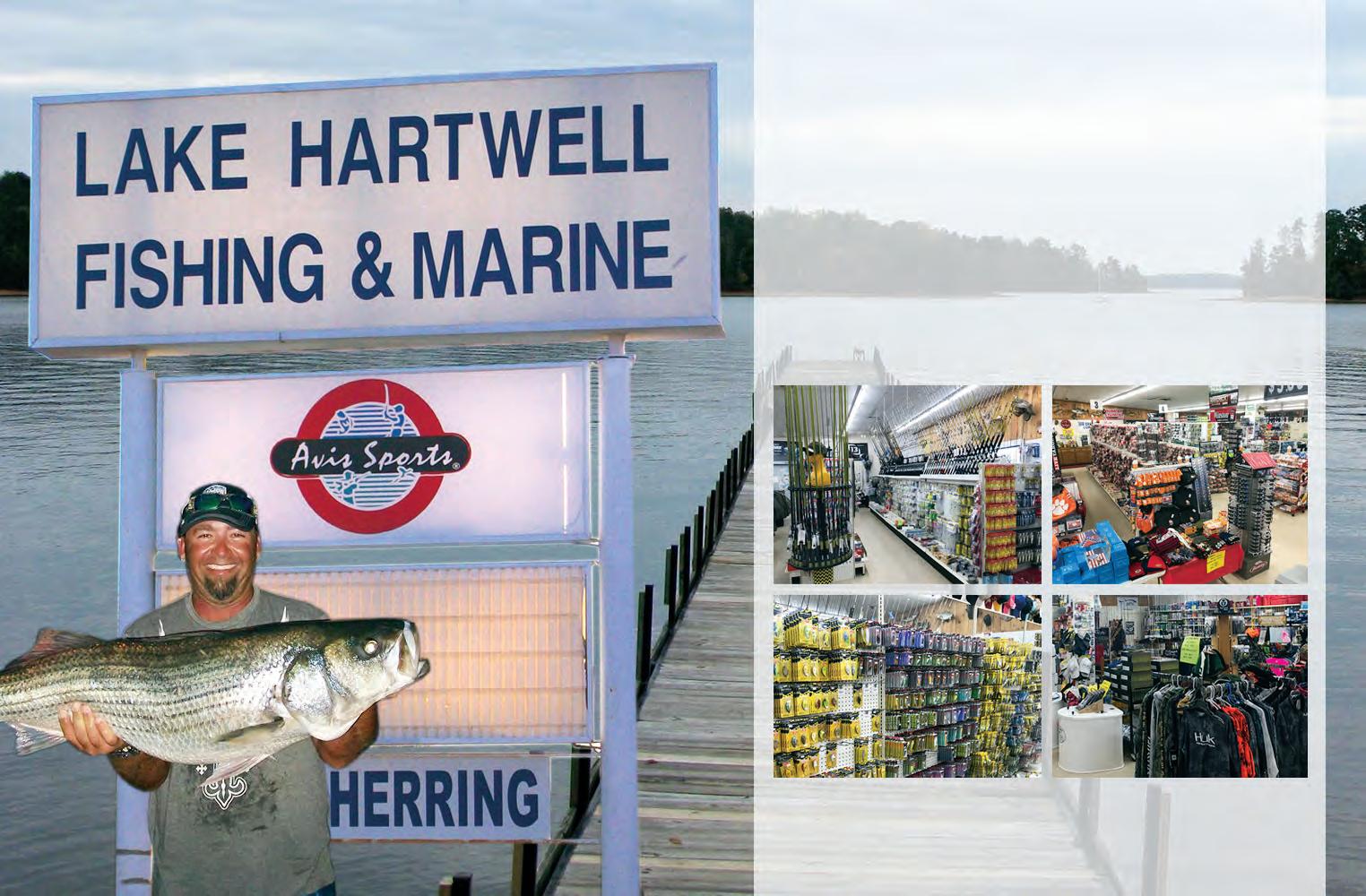



By Scott Norton
ow that we can see warmer weather has penetrated the cold, the waters of the lakes will be rising. Lakes in the lower elevations will start rising first followed by the higher elevations. The higher lakes will get turned on during warm days, so it’s not a bad plan to fish there, you just have to wait and go on those nice days. If you live in areas like the mountains, having a variety of lakes to choose from gives the angler the upper hand. Basically, you want to start on the lower lakes and as the weather warms up you start going higher in elevation to make the spawn season last longer if that is your desire. In the summer you use this same technique to find cooler water during the dog days.
Since the waters are still very cool you will notice that the water will be very clear unless the rain that will be coming has blown out the water. Select your baits carefully. If you are looking at clear water then you need subtle baits with muted color and lighter action. If you are coming into water that is muddy from rain you will want to go with a more aggressive color with a bigger size for more water displacement. The color red works extremely well this time of year because those female bass are looking for crayfish. Crayfish have iodine, which is what female bass need to break loose those egg sacks for a successful spawn. You will have a variety of red such as ones with a ghost see-through red and ones that are opaque. The ghost colors are for clear water and the opaque colors are for muddy conditions.
With the spawn season coming up, availability will be scarce. Do not try and order gear just before your trip. I can tell you from experience, this will lead to disappointment. You will also pay full price for everything. Always be on the lookout for sales through the holidays, in the winter, to


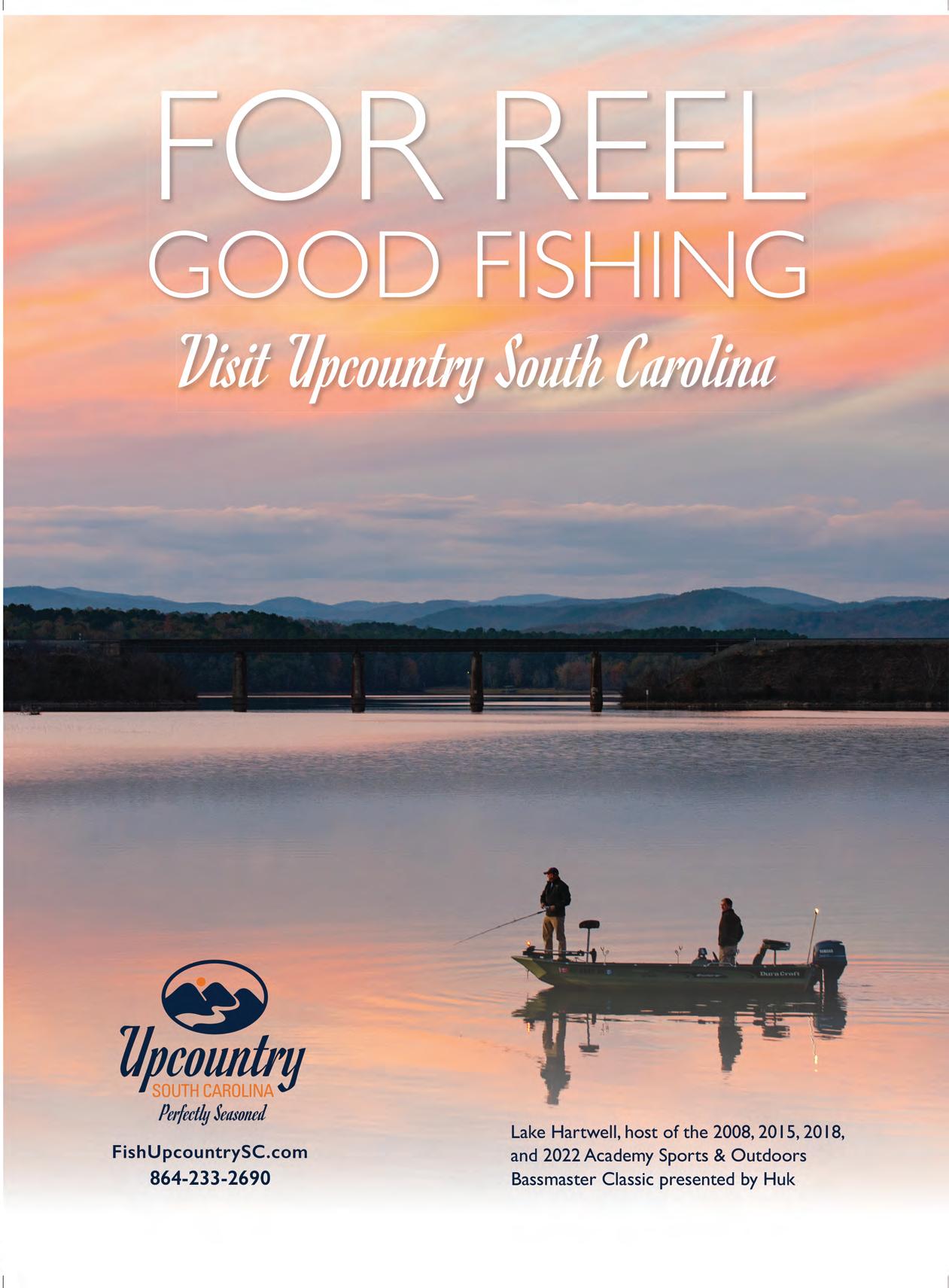
By Capt. James McManus
So spring is finally here. If TVA will ever stop raising and lowering Fontana, the fish will hit the banks and it will be several months of really good spot action. It has been amazing to see all the bait that’s in the lake. There was a small, late shad die off, but everywhere you look it’s school after school of both threadfins and bluebacks.
If NCWRC is dead set against stocking stripers, I wish they would consider an alternative. Just watched a documentary on the invasion of species into the Great Lakes. When alewives found their way into the lakes they (like the bluebacks) disrupted the perch and walleye populations. Michigan, unlike NC, tried a unique solution and stocked coho salmon and, in the process, created one of the healthiest and most successful fisheries in the country. The economic impact saved businesses and communities all around the lakes.
Fontana has become a one trick pony with spotted bass being the dominate species. There are some trout. bream and smallies, but 95 percent of your catch is going to be spots. Whatever, if anything, is ever stocked here it will be a forever endeavor. As long as bluebacks are here with no help from other species like stripers (or cohos...think about that for a moment), anything that spawns in a river system will only fuel and feed the bluebacks; gone are the walleye and white bass natural reproductive cycles.
I have said before I will quit whining about the inaction of NC but I guess I lied. In the meantime, enjoy our spots, they are awfully fun to catch and eat and thank God for our beautiful lake.
Later, Capt. James



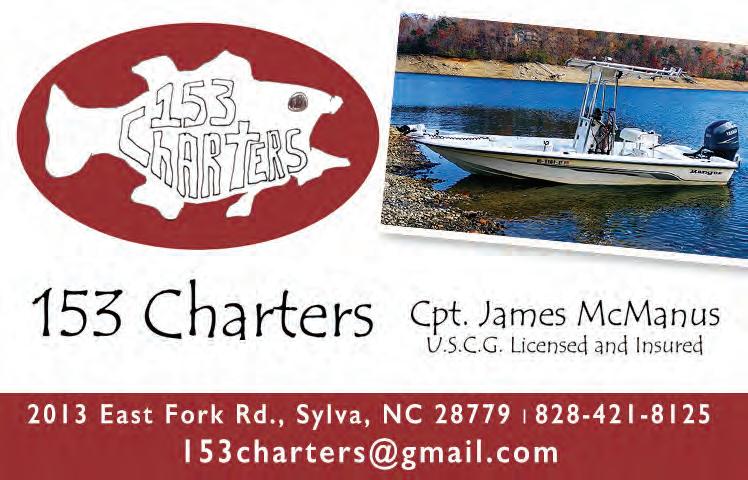

By Ronnie Parris
Hey folks, I hope you are doing well. Looking forward to more great weather and awesome fishing. This month in our mountain lakes you’re gonna get a mixture of fish, usually spotted and smallmouth bass, white bass, yellow perch and crappie. The crappie are in their pre-spawn pattern, so this will probably produce some of the best crappie fishing of the year. Although crappie tend to hold on submerged brush, and some will be found there now, I tend to catch the bigger slabs out from the bank, in the middle of the lake.

Fontana Lake Fishing Guides – Ronnie Parris, Owner & Head Guide LAKE, CREEK & RIVER FISHING • FLY FISHING • CAMPING
We o er both full and half day trips with the most competitive rates available. All tackle and supplies you will need while you are on your trip is covered by our listed price.
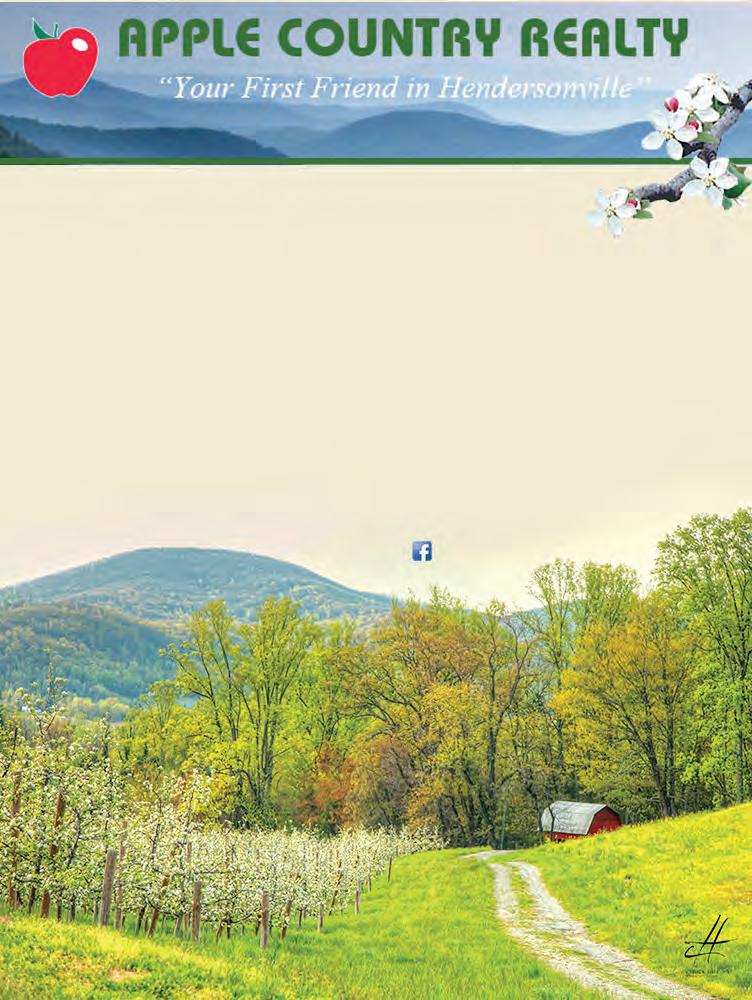

Most will be scattered in small schools, but you will see singles too. The live scope has really made fishing for these fish possible. Years ago, there was no way to locate and track these schools, but with the live scope, you have an advantage that’s priceless. I usually start with my Garmin set for scanning around 100 feet, and I scout till I locate a school. I then pull it in to around 50 feet so it shows my bait or jig better.
As far as my baits, I use multiple Bobby Garlands, sliders, twisters and crappie magnets as well as live minnows, small plugs and spoons. Every day is different as far as colors, so just keep changing until you find what they like that day.
A slow retrieve is a must. Crappie don’t do a lot of fast chasing and tend to wait for the bait to come to them. I use 6 pound mono for my line and a medium light action rod. Hits are subtle, so watch for the tick in the line and don’t overset the hook, as their nickname are papermouths for a reason.
Most of what I catch will usually be in the 5 to 20 ft range, but I’ve seen them drop deep on calm, bluebird days. I prefer a slight breeze on the surface to help with getting close and not spooking them.
Crappie make great table fare at a size of 8 inches, but I won’t keep one smaller than 10 inches just because there’s not much meat on an 8 incher.
Spring is here so get out have fun, and as always, take a kid fishing.
Ronnie Parris is owner and head guide of Smoky Mountain Outdoors UnlimitedFontana Lake Fishing Guides, headquartered in Bryson City, NC, 488-9711.
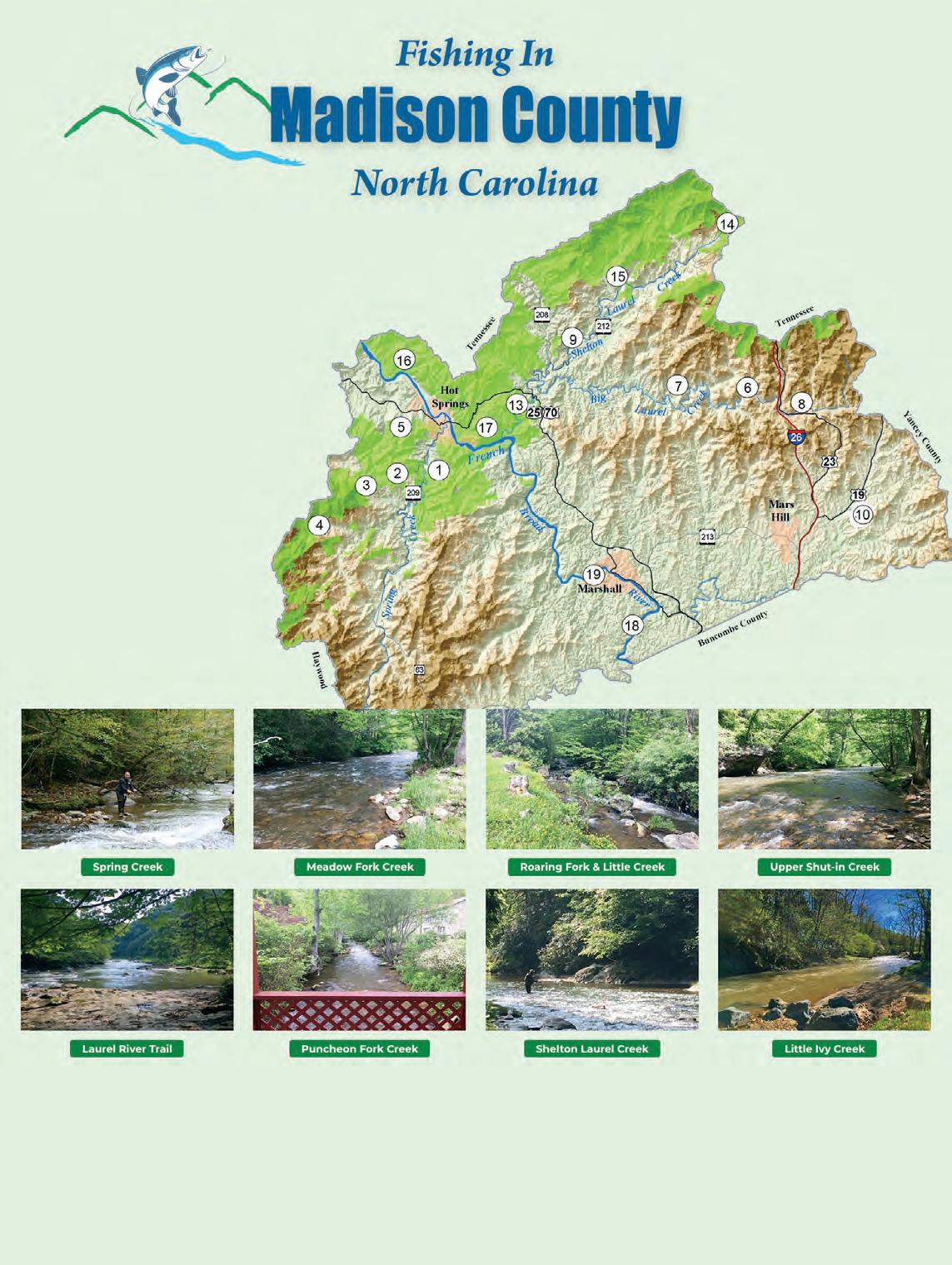
Owner Captain Jim Fishing (14 guides on 16 waterways), Superbaittanks.com, Captain Jim Marine Electronics, Captain Jim Lures and much more.
Greetings to my readers! I hope the world finds you and your family doing well!
The Stripers in the Cumberland River are some of the largest “freshwater” stripers in the world! We have clients come visit us to go after these Cumberland River monster stripers from every State in the USA and even from several foreign countries. The Cumberland River stripers we catch are massive! Because we use large 2-to-3-pound trout as bait, our “smallest” fish daily generally at about 20-pounds with an average striper of about 30-pounds a day (with a good chance at a 50-pound fish!)
The striper fishing on Cherokee Lake and Lake Cumberland is very popular with our clients. In April we troll live bait on planer boards 10 to 30 feet deep and also downline on suspended schools of fish,
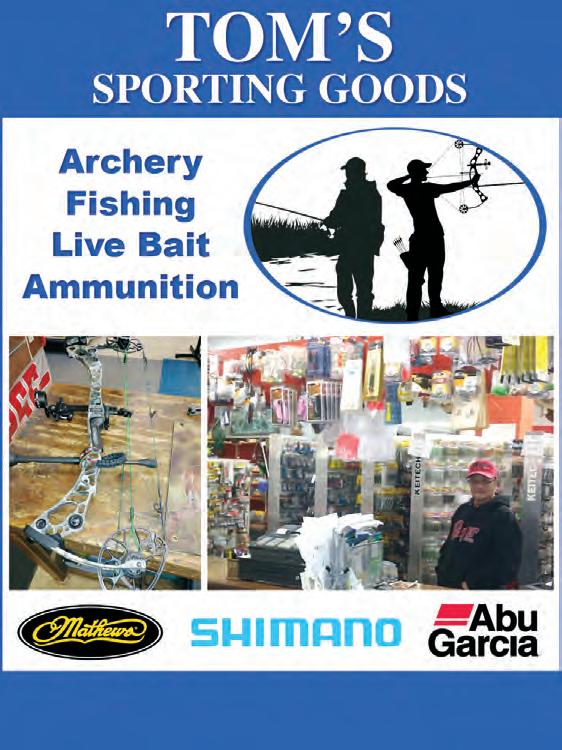

concentrating on main creek channel points. With numerous full-time guides on each waterway, StriperFun offers day trips on Cherokee Lake and Lake Cumberland year-round (weather permitting).
We begin each year (beginning April 1st) fishing on walleye fishing on Dale Hollow fishing at night under hydro glow lights (a great product we sell!) on lake points with drop offs and grass bed edges. Our techniques include jigging, live bait “snagging” and casting – casting a variety of lures – blade baits and jigging spoons. You will want to anchor up and be in place at least an hour before sunset. It is best to spend time during daylight hours “scouting” these lake points, grass beds or drop offs so you are not disoriented at night. We then begin day trips in June, running through October.
It is great to be alive and be a “free” American! I look forward to seeing all of you this year on the water. Always remember to stop and shake the hand of a person in uniform or wearing garb that shows they are a veteran! Their service is why you speak English, can vote and can enjoy the freedoms you do! Until next time, blue skies and tight lines!
With full State licensing and insurance, all Captain Jim’s Guide Service guides can take you on a safe, fun and unforgettable fishing adventure! Check out all of our fishing services as well as our exclusive “online” store at www.striperfun.com or call 931-403-2501 to make reservations today.

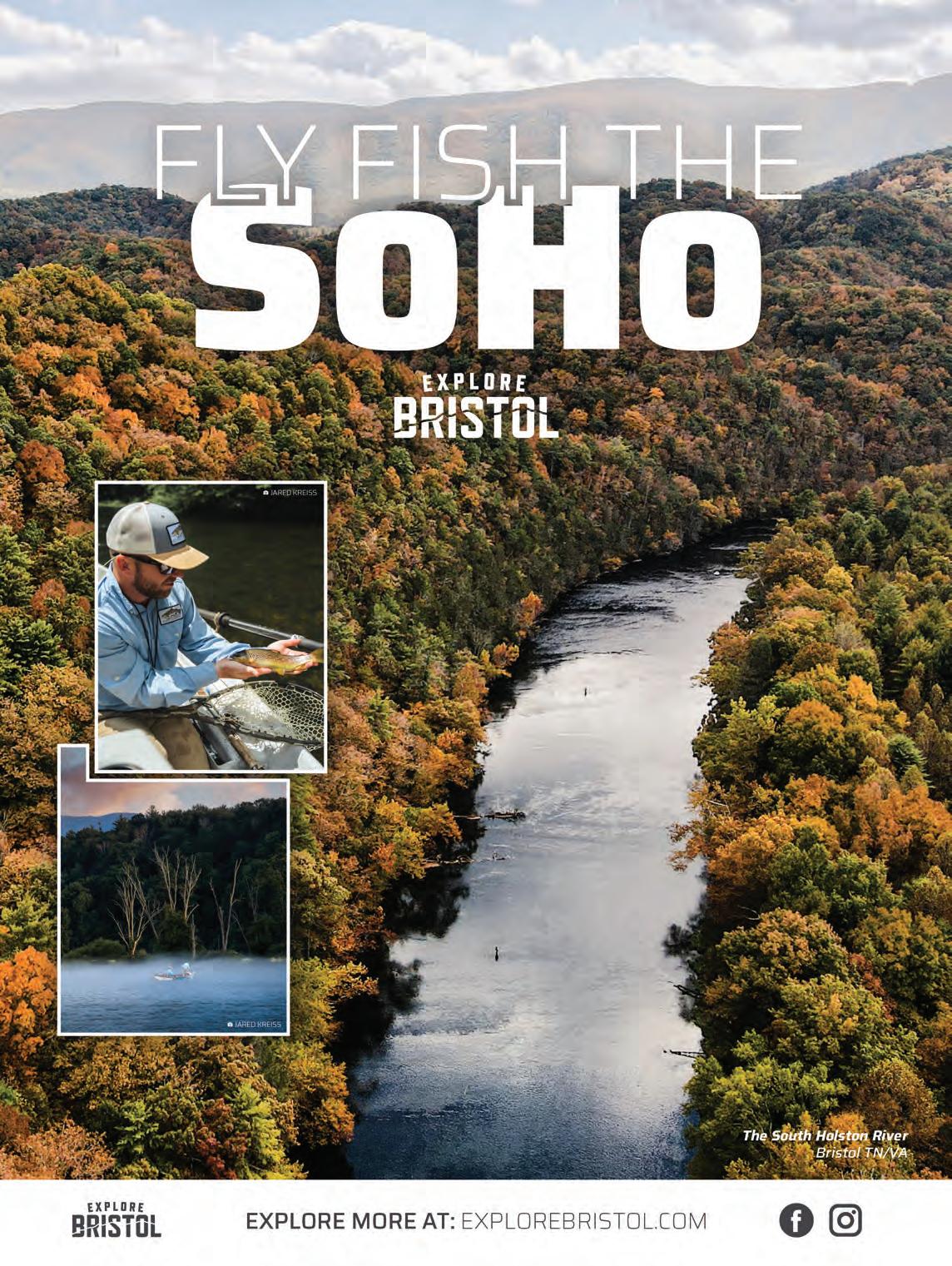
TWRA stocks fingerling and adult trout into coldwater tailwaters below dams to provide fishing opportunities. In many tailwaters trout fishing can be good year-round. Trout are stocked routinely during the following months. Use caution below dams. Call TVA at 1-800-238-2264 to check dam discharge and generation schedules. tva.gov/Environment/Lake-Levels
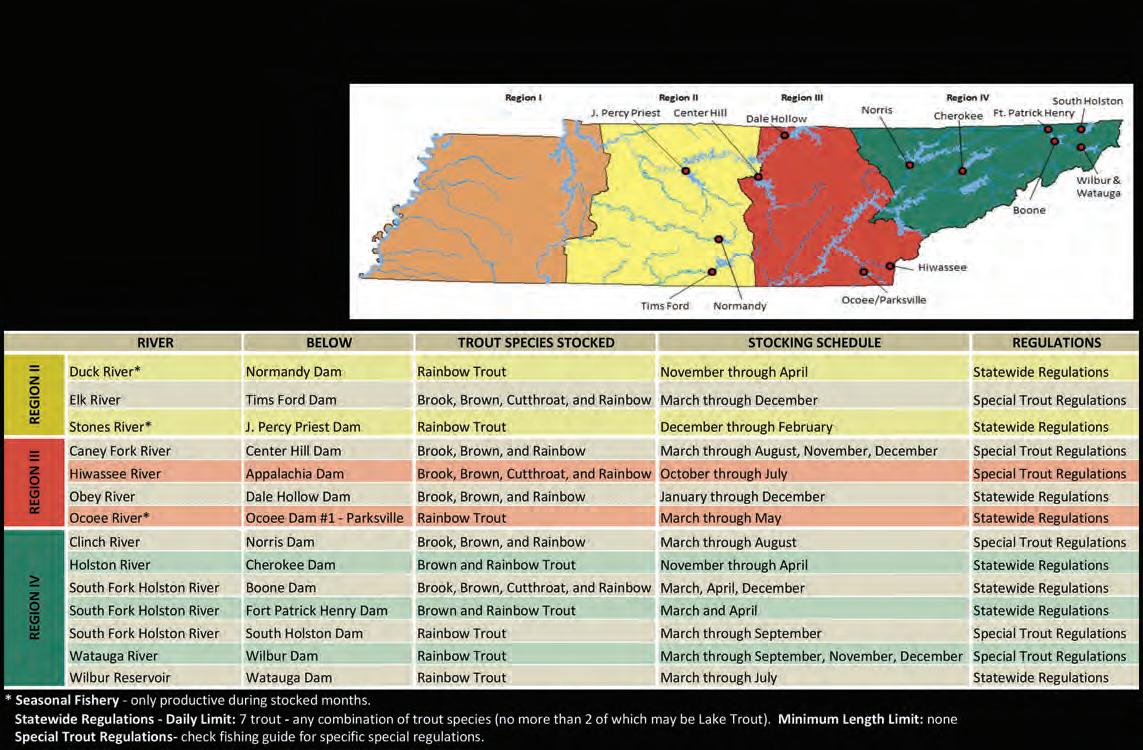
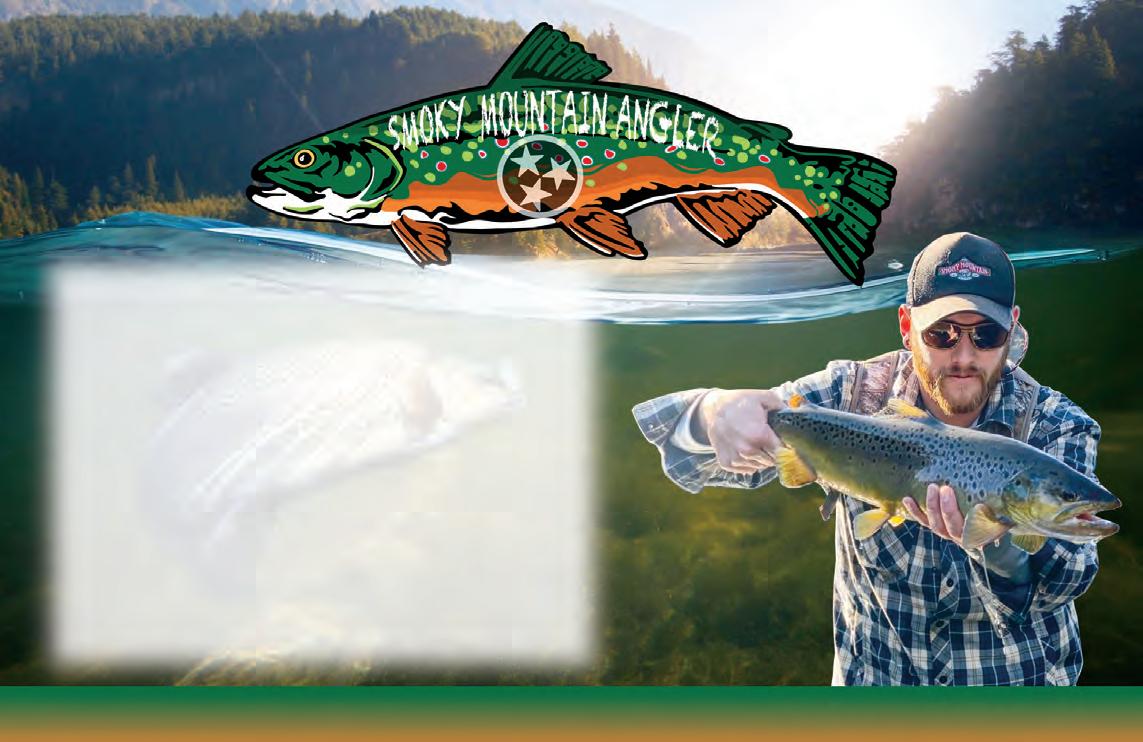

By David A. Ramsey
First things first: Local, regional, state and national organizations, including armies of volunteers, are still extremely busy, all across the southern Blue Ridge and Great Smokies region, addressing the critical needs of our Helene-impacted families and communities. Their epic mission is laser-focused on helping to restore basic property and infrastructure and working tirelessly to meet the daily living challenges of the thousands who suffered Helene’s massive, three-day onslaught. This year, and likely for the next few, this must and will be priority one.
However, as the basic life-needs of the region’s people are more substantially met, more attention can be given to those aspects of the disaster a little further down the priority list, such as impacts on our outdoor recreation facilities and natural resources. Of course, this includes our trout streams, lakes and their all-important supporting resources. What kind of attention and assistance is needed to help the fish, their habitat and all those places we cherish in pursuit of our sport? All kinds...and a helluvalot of it.
It’s pretty well accepted now that, in this corner of the world, we’ve never seen the kind of catastrophic flooding we experienced September 25–27, 2024. Particularly in western North Carolina and eastern Tennessee, virtually every mountain river and all their tributary creeks and branches were turned into raging torrents, blown out to many times their normal size and flow. Unprecedented streambank and land erosion, extensive channel alteration, large object obstruction, household and property debris and pollution, heavy brush and log jams, damaged or destroyed roads,

parking lots, access points and launch areas are among the many forms of destruction that savaged our region.
While there will be numerous groups and organizations who will soon be stepping up to address these problems, they will likely be looking to expand their volunteer ranks. Maybe you’ve thought or talked about pitching in for years. And maybe, like most everyone, you’ve just been busy—work, family, life, fishing. Well...here in the southern Blue Ridge, if ever there was a time for doin’ instead of just thinkin’ or talkin’, 2025 would probably be it. Although there are plenty of others, here are a few groups and organizations who might appreciate your help:

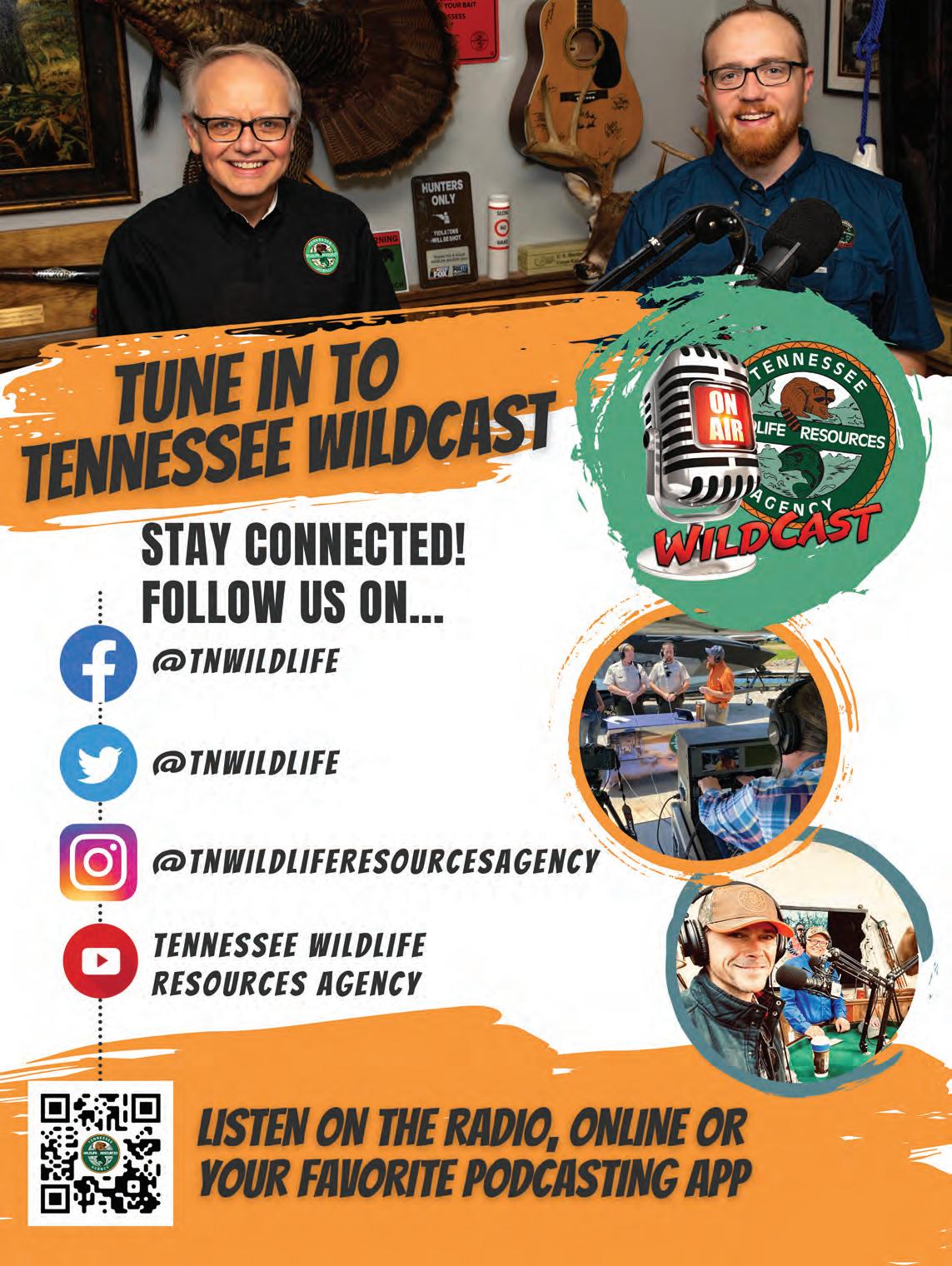
By Perry Hensley Sr.
This year’s tournament is scheduled for April 26th, 2025, and it is set to be held at the same location, Terrace View Marina, and is shaping up to be the best tournament yet! Now that being said, slots are limited, as this year’s sign up has been set to only 100 boats, but you still have time to sign up. Contact Matt Xenos on Facebook for the details, but please hurry! With payouts of $1500 each hour and a $5000 Big Fish payout you stand to have a great payday. This is the best time of year to catch that once in a lifetime Slab and get you some extra fishing cash to boot. Below is a recap of last year’s results:
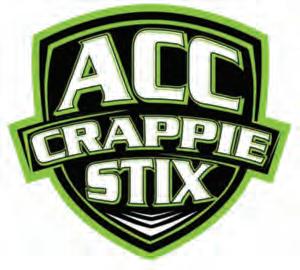
On April 27th, 2024, the 4th annual Acc/Crappie Cove Big Crappie Bash took place on Watts Bar Lake here in Tennessee. Guys and gals, let me tell you, it turned out to be a great one! It shaped up to be a recordbreaking tournament with the record number of 87 boats and participants registered and competing, and a real plus was the record-breaking weights brought into the weigh station. YouTube Celebrities (if you will) such as Matt Xenos (Wired for Crappie), Davis from (Flopping Crappie) and Chris A.K.A Sarge from (Asleep At The Reel) all competed in this awesome event as well.
The Morning started off with a prayer held by Chris (Sarge) followed by the playing of the National Anthem, as all these patriotic anglers saluted their American Flag and what it stands for with honor. Each angler’s

excitement level quickly elevated as the countdown to blast-off ticked closer and closer until at last the first 20 boats took off and each 20 after that left the marina at Terrace View wide open to get to their favorite spots of the lake.
Sure didn’t take long before the first winning crappie for the first hour was weighed in which was a very respectable 2.04 lb. Watts Bar Slab by Jeff Webber and his partner Cody Gaines. As hour two rolled around Mike & Frankie Chesser of the Slab Happy Lures Pro Staff and the overall winners of the 2023 tournament boated into the scales weighing in that hour winning fish being 1.98 Slab taking the win for that 2nd hour.
Hour #3 made it interesting when Mr. Larue Isom and Jason Grimes (Slab Happy Pro Staffers) also came to the scales with an absolute Watts Bar Monster Crappie! Their fish weighing in at a whopping 2.56 lb. was a mind blower for most of the anglers, and that particular fish would win the entire tournaments big fish spot to put these fellas facing a good pay day of $6500!
Mike and Frankie Chesser would once again return to the scales during hour #4 to secure another check that would give them a pay day of $3000!
Special thanks to Andy Lehman of ACC Crappie Stix - Matt Xenos of (Wired for Crappie) who also won an hour with his partner Josh Sanders weighing in a giant 2.12 lb. crappie, taking home $1500 themselves. Congratulations to all the winners and thank you to all of those who helped in making this tournament one of the best yet. The next tournament has already been scheduled for April 26th, 2025, at Terrace View Marina on Watts Bar Lake, and I look forward to being there to compete in that one as well. As always, May God Bless each of you and Tight Lines! –Perry Hensley Sr.
NOTE: Contact Matt Xenos (Wired for Crappie) to register for the next event!


THE YEAR TO VOLUNTEER continued from page 20
Cherokee Chapter – Greeneville, TN
Little River Chapter – Sevierville, TN
Great Smoky Mtns. Chapter – Knoxville, TN
Overmountain Chapter – Johnson City, TN
Land O’ Sky Chapter – Asheville, NC
Cataloochee Chapter – Waynesville, NC
Table Rock Chapter – Morganton, NC
Pisgah Chapter – Brevard, NC
High Country Chapter – Blowing Rock, NC
Tuckaseigee Chapter – Sylva, NC
Haywood Waterways Association – Waynesville, NC
Mountaintrue – Asheville, NC
Riverlink – Asheville, NC
Southern Appalachian Highlands Conservancy – Asheville, NC
Pisgah National Forest – Asheville, NC
Samaritan’s Purse – General NC Helene recovery TN GROUPS
Appalachian Paddling Enthusiasts – Jonesboro, TN
Tennessee Eastman Hiking and Canoeing Club – Kingsport, TN
Friends of Rocky Fork State Park – Flag Pond, TN
Cherokee National Forest – Cleveland, TN
Great Smoky Mtns. National Park – Gatlinburg, TN
United Way of East TN Highlands – General TN Helene Recovery
David Arthur Ramsey is an outdoor photographer, writer and conservationist, born and raised in the mountains of northeastern Tennessee. His outdoor writing and photography have been published locally, regionally and nationally. Field and Stream Magazine and Toyota Motor Company named David the National Hero of Conservation in 2011 for his leadership in saving the 10,000-acre Rocky Fork watershed in northeastern Tennessee. His newly published book, Rocky Fork: Hidden Jewel of the Blue Ridge Wild, tells the story, of the battle to preserve this Appalachian and American treasure.

THINKING AHEAD continued from page 10
get deals and availability.
During the winter ,if you have any issues with your boat ,you are going to want to take care of that before the spring. The marinas are extremely busy this time of year and if you wait until then, you will have to get in the back of the line. I would say this problem is the worst case scenario if you want to be ready. Being ready for the season is a great feeling to have and allows you to concentrate on catching fish. I have been invited to go fishing with a friend before and when you get out on the water you start dealing with mechanical or electrical problems that leave you stranded. If you have all your ducks in a row I suggest you take your own to start with, so you can locate and start tracking bass the first trip out. With every trip you build your plans based off the last trip you took. Have fun and enjoy your time on the water.

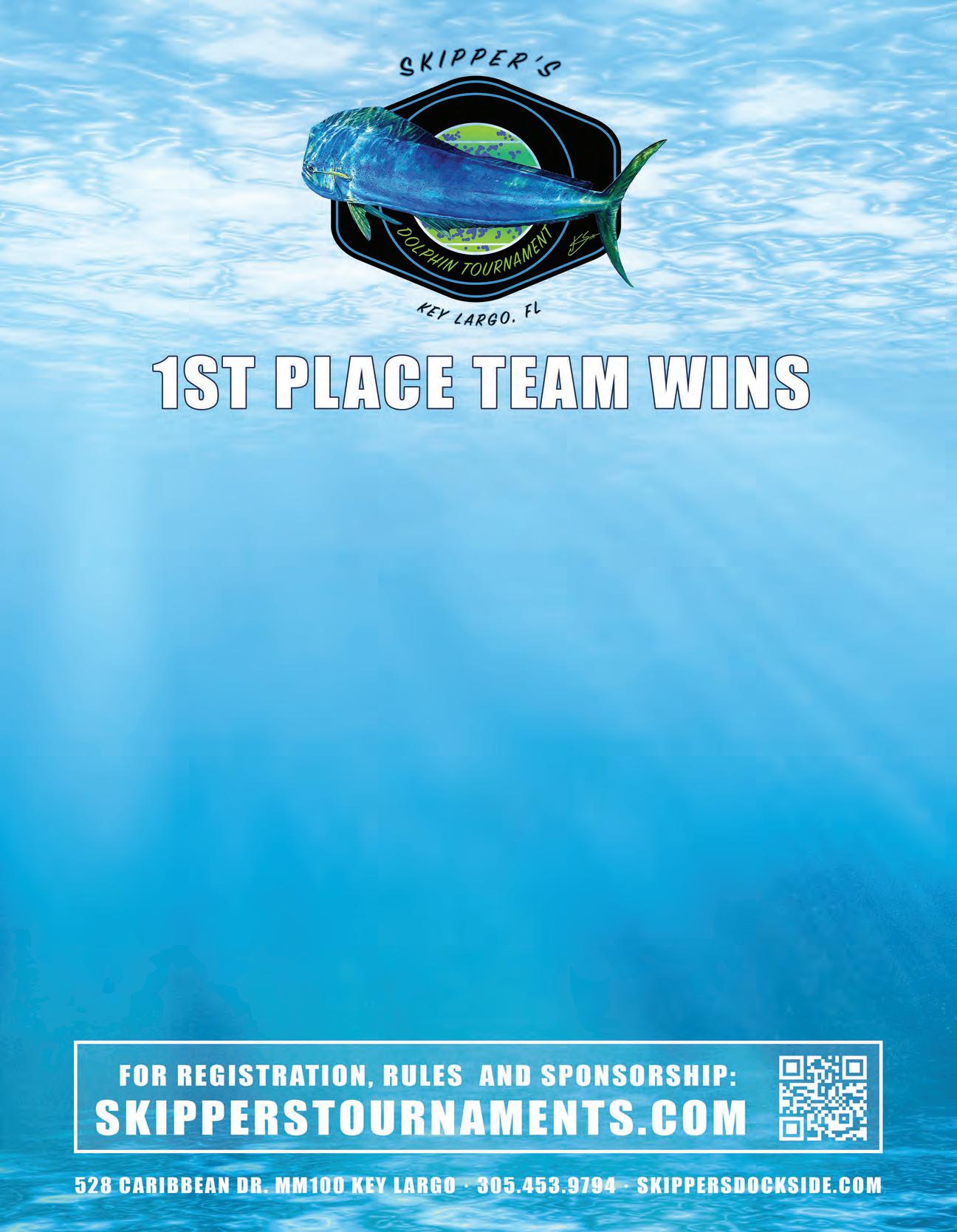




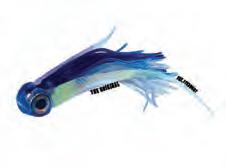

The National Pediatric Cancer Foundation (NPCF) created “Fishing Funds the Cure” to raise awareness and funds for crucial research. Each year, they unite corporate partners, passionate anglers, and dedicated supporters for Fishing Funds the Cure Tournaments through an activity that everyone loves. ese exciting inshore and freshwater shing tournaments are held in beautiful locations like St. Pete Beach and Sarasota, Florida, San Juan, Puerto Rico, and more. Each event, thoughtfully designed to engage supporters, features a kick-o celebration, angler swag bags, an awards dinner and a silent auction, all dedicated to making a meaningful impact.
NPCF organizes these events to blend the universal love for shing with an important cause. eir mission is to conduct research leading to less toxic and more therapeutic treatments for children with cancer, and are committed to making a di erence in a system that o$en neglects our children. Despite their bright futures, only 4% of government funding for cancer research supports pediatric initiatives, highlighting the urgent need for advocacy.
NPCF has made remarkable progress and is recognized as the nation’s leading solution, delivering rapid, innovative, and e%cient science
through a collaborative network of 40 hospitals. Operating independently of pharmaceutical and government funding, with eight institutions noted in the “Top 20” by US News, they have invested over $40 million in translational studies and clinical trials. NPCF currently have 30 studies and 11 active trials:
• A new drug compound – which could be the 11th drug utilized to treat children
• Blood bio-marker study – which could be a prevention indicator for relapse patients
• A rare disease trial addressing “rhabdomyosarcoma”
• Multiple combined immunotherapy trials to include a potential vaccine
• NPCF has also authorized the “ rst-ever” education toolkit – provided to pediatric cancer families
• ey are also developing treatment guidelines for relapse patients
If shing is your passion, NPCF invites you to channel that enthusiasm toward a worthy cause. Join them at one of their tournaments, organize your own fundraising event, or take on their “43 Challenge” to honor the 43 children diagnosed

with cancer every day. You can easily start by using NPCF’s online fundraising tool, challenging 43 friends to sh, and encouraging them to donate $43.
e National Pediatric Cancer Foundation is proud to be a top-rated charity, with 89% of every dollar donated directly supporting research. To learn more, visit NationalPCF.org.
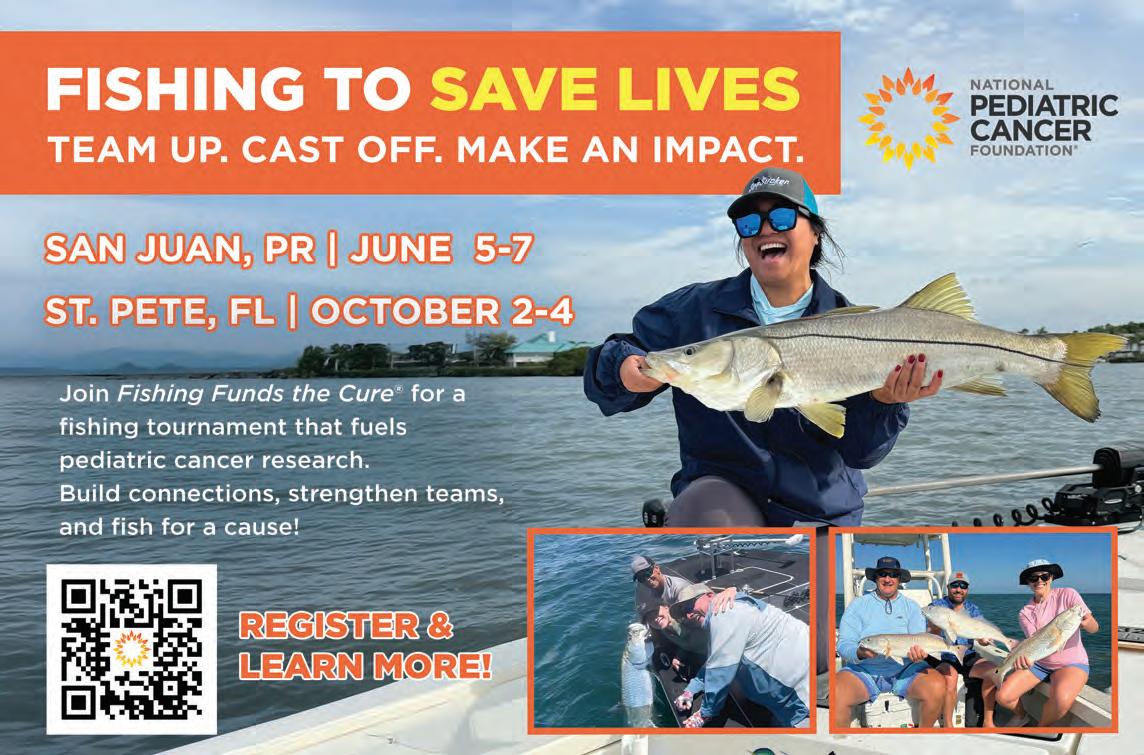
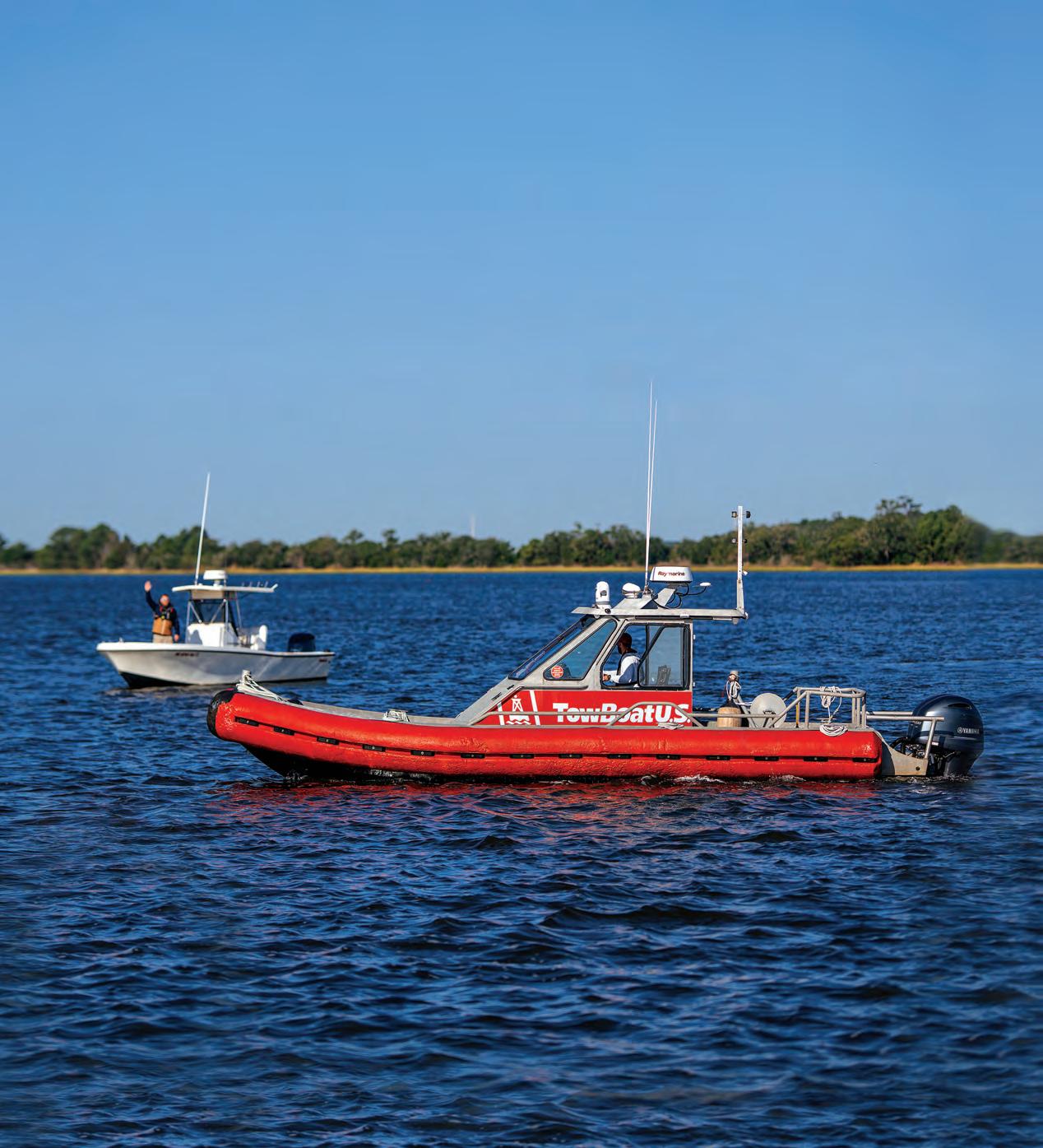




The month of April is when the real change comes around. For a number of reasons, April can be a game changer. Just for starters, we have made it out of the month of March and the “Gales of March.” !e temperatures will rise, the daylight hours will be longer, and the urge to spawn will get stronger for a lot of species.
!e pelagics will be on the march up the coast headed north, and I have taken a much di erent approach to shing in general, but especially for the pelagics. Sure, we may troll for a short period in the morning to mark some bait and/or productive bottom holding sh like African pompano, big snapper and grouper, but trolling will quickly stop and dri$ing and/ or %ying the kite will begin as the sun rises in the sky. As the title of the article suggests, we have either stopped on the way out or will start to work with the Sabiki right away.
!is is the key: when you have the live bait, you get the bites. Don’t hesitate to bring bait from the dock like pin sh, menhaden, etc. to use as light-line kite bait or bottom bait. Sometimes it’s just easier to pull up beside the bait barge and exchange some green for sardines, cigar minnows, goggle eyes, etc., so you can just get on with getting to where


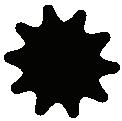


Tim Barefoot

you’re going and start shing right o the bat. When you nd a good mark of bait, and hopefully bottom structure, the stage is set. Put the kite %oats, tackle or freelines out and start sending the jigs to the mid or lower water

column, and even to the bottom. Of course, I like a natural looking squid jig you can cast to breaking sh that’s heavy enough to sh in the mid to lower water column or a few hundred feet deep when needed on the bottom. the
entire time you were harvesting sh on the jig pay attention to the free line or %oat baits and keep some chum going if possible. !is is a great way to bring the sh to you. !ey will de nitely come to the chum.
As always, I would pay attention to the amount of noise you make. Don’t let cooler lids slam down or hard objects hit the deck; this will send a soundwave hundreds of yards away from the boat telling the sh something isn’t right. If you’re dri$ing quietly with a chum slick out and beautiful live baits, you have a recipe for success!
!is is a great time of year to catch that African pompano of a lifetime in 150- to 250foot range as they are ready to break up into smaller schools for spawning. Again, I like a squid-type jig because it is the primary food source for the African pompano. It is the bulk of their diet according to the experts. And it’s not just African pompano; everything out there, without exception, eats a squid. !is is a great way to catch big snappers as well. Pull up to where the marks are, make a dri$ and repeat as o$en as needed. A trolling motor upfront can slow the dri$ nicely, keeping your boat forward in the wind with the kite bait or %oat, and baits behind the boat very manageable.
And be sure to keep an eye on the recorder to know where to keep the jig in front of sh.
For more info on the squid jig and dri ing, check out Tim Barefoot’s YouTube channel and website, barefootcatsandtackle.com.
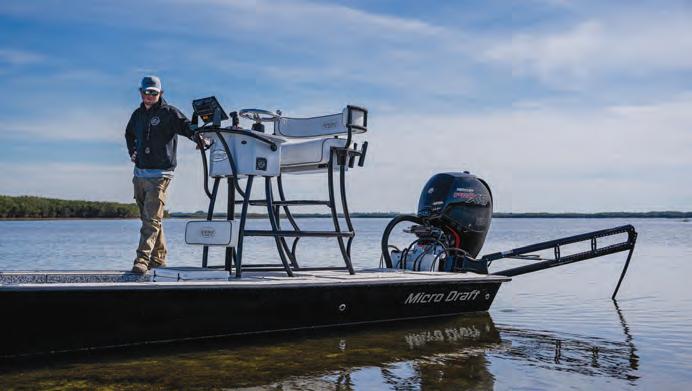





It was a warm summer afternoon and my wife and I were mingling with the best of them. The occasion was a 1920s-themed party, and everyone was dressed to the nines. Parked on the manse’s circular driveway was a beautiful classic convertible. It was here that I got the idea for our new 1920s Retrograde Watch.
Never ones to miss an opportunity, we carefully steadied our glasses of bubbly and climbed into the car’s long front seat. Among the many opulent features on display was a series of dashboard dials that accentuated the car’s lavish aura. One of those dials inspired our 1920s Retrograde Watch, a genuinely unique timepiece that marries timeless style with modern technology.

With its remarkable retrograde hour and minute indicators, sunburst guilloche face and precision movement, this design is truly one of a kind. What does retrograde mean? Instead of displaying the hands rotating on an axis like most watches, the hands sweep in a semicircle, then return to their starting point and begin all over again.

Retrograde watches by the big brands can set you back thousands; one recent offering from a big French fashion house is selling for more than $150,000! But because we’ve designed the 1920s Retrograde Watch in-house, we can offer it to you for just $99!
This watch is so wildly popular with our customers that we’re actually concerned about running out; we only have 937 729 left for this ad!
Join more than 1 MILLION smart people who love stauer watches

Watch Specifications:
• Precision movement
• Stainless steel case, caseback and crown
• Retrograde hour and minute indicators
• Water-resistant to 5 ATM




• Brown genuine leather band
• Fits wrists up to 8"
1920s Retrograde Watch
$399 $99* + S&P Save $300


*Special price only for customers using the offer code.





“An elegant and exciting timepiece that every collector will love.”
— George Tomas, internationally renowned watch expert



“[A] unique and beautiful timepiece.”
— Carlos C., Los Banos, CA





By Don Norton
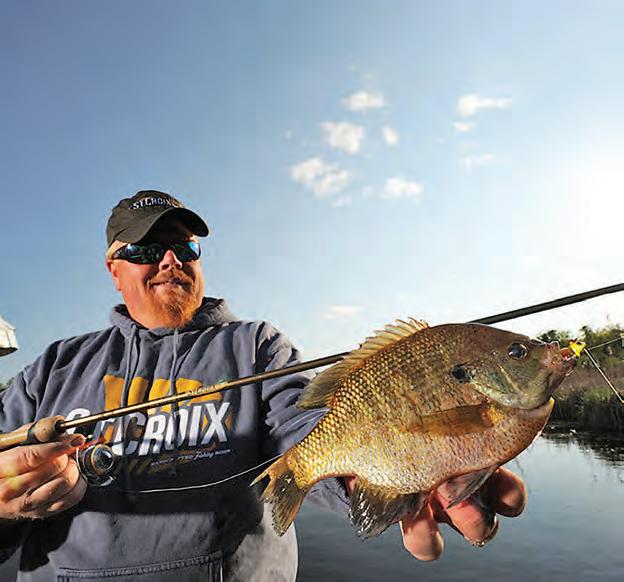
Most anglers think of Lake Okeechobee, Florida, and many other great shing lakes as a destination for largemouth bass. And they truly are. But for those in the know, “Lake O” boasts some of the greatest bluegill shing you’ll nd anywhere in the country.
!is is the time of the year—April and May—that bluegill anglers look forward to all year long. !is is when the feisty, hard- ghting pan sh begin their annual spawn. !eir popularity is unmatched with young and experienced anglers looking to test their light line and tackle.
While bluegill is a single species (Lepomis macrochirus), it is sometimes categorized into three subspecies: the northern bluegill, the coppernose
bluegill, and the southwestern bluegill.
To add to the confusion, redear sun sh and bluegills, both belonging to the sun sh family, are easily confused, but can be distinguished by the red or orange coloration around the redear’s operculum (gill %ap), while bluegills have a dark blue to black operculum. Redear sun sh typically grow larger than bluegills, but are o$en caught in the same area, as are coppernose bluegill.
Bluegills are so plentiful that many anglers come to Lake Okeechobee every year just for them and go home with coolers full of their tasty lets. !e daily limit is $y pan sh per angler, and that’s not a hard number to reach when the season is in full swing.
Bluegills can be caught year-round, but when they come into the shallows to spawn, they become a much easier target. Many anglers will test their skills with a %yrod and small popper, while others will use live bait, light line, and tackle—and even bamboo cane poles!
On average, bluegill typically range from six to eight inches in length, although some can grow up to 10 to 15 inches. Nine inches is considered a decent keeper in the “Big O.”

To rig for bluegill, use a small hook (size 8-10) with a light line, a small split shot a few inches above the hook, and a bobber set to suspend your bait near the bottom; commonly used live baits include small worms, waxworms, or crickets, and you can also try small jigs or tiny so$ plastic baits depending on the situation and water depth.
When it comes to the time of day that produces the best bluegill shing, many anglers recommend early evening. As the sun begins to set, waters tend to calm down and %ying insects quickly become a big part of the menu.
But during the spawn, bluegills can be caught all day long.

Finding the beds is relatively easy. Just look in shallow water, 5-foot deep or less for small circular divots in the sandy bottom. !ese “beds” will o$en be close together and will sometimes number in the hundreds.
!e world record bluegill—a sh weighing 4 pounds, 12 ounces— was caught in 1950 in Ketona Lake, Alabama with a cane pole and common worms.
Don Norton is Co-Publisher of Coastal Angler Magazine’s Okeechobee edition. Contact him at (863) 273-4998 or don@theanglermagazine.com.


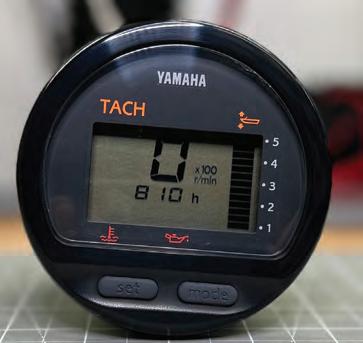













Praise for DiamondAura®
“So much sparkle and the play of light on DiamondAura® beats any diamond!” — D.D. from Columbus, OH
A classic tennis bracelet serves up over 10 carats of sparkle for a guaranteed win
It was the jewelry piece that made the world stop and take notice. In the middle of a long volley during the big American tennis tournament, the chic blonde athlete had to stop play because her delicate diamond bracelet had broken and she had to fnd it. Te tennis star recovered her beloved bracelet, but the world would never be the same.
From that moment on, the tennis bracelet has been on the lips and on the wrists of women in the know. Once called eternity bracelets, these bands of diamonds were known from then on as tennis bracelets, and remain the hot ticket item with jewelers.


with D Flawless diamonds from another company that costs $57,000!
Want to look like a million bucks without stressing over losing or damaging something that cost you a fortune? Te Love Wins Tennis Bracelet is a simple strand of glittering gems in precious sterling that epitomizes elegance.
FREE earrings with your purchase of the Love Wins Bracelet.

Te frst time we ofered this bracelet, we sold out literally in minutes. It was our fastest selling product of 2021. It took six months to get it back in stock — Get yours before we run out!
And there’s more... we will also include our Ultimate Diamond Alternative™ DiamondAura® stud earrings for FREE!
Jewelry Specifcations:

• 10 ¾ ctw of the Ultimate Diamond Alternative®, DiamondAura®
• Rhodium-fnished .925 sterling silver settings
• Bracelet: Fits wrists to 7 ½". Earrings: 1 ctw with post backs


We’ve captured this timeless classic with over 10 total carats of DiamondAura®, our signature diamond alternative stone. Tis sparkling marvel rivals even the fnest diamonds (D Flawless) with its transparent color and clarity, and both are so hard they can cut glass. Don’t believe me? Te book “Jewelry and Gems – Te Buying Guide,” praised the technique used in our diamond alternative DiamondAura®: “Te best diamond simulation to date, and even some jewelers have mistaken these stones for mined diamonds,” it raved. For comparison, we found a similarly designed 10 carat tennis bracelet
Love Wins Tennis Bracelet (10 ¾ ctw) $399 $39* + S&P
FREE stud earrings (1 ctw) with your purchase of the Love Wins Bracelet — a $99 value!
*Special price only for customers using the offer code.

Your Offer Code: LWB343-02
TYLER WOOLCOTT

ne of my all time favorite times of year to fish with one of the most fun ways to catch a bass. The spawn and post spawn feed is here for most of us in the south and it won’t be long for many others in the other parts of the country. There is a plethora of ways to catch these bass, but my all time favorite for getting bit and drawing in a big one is a hollow body popping frog.
A popping frog can be used as an incredible search bait, duplicating many different baitfish depending on where you throw it and what color you tie on. There are many different options out there, but I try to duplicate the baitfish forage in the particular lake I am fishing on. Sometimes I will stick to a frog that may imitate a bluegill, and sometimes I throw a color that would imitate a shad. Finding a frog that pops well, has good colors, and a big hook is a few things that need to check the boxes for me. The Gambler popping frog is good and so is the Spro.
When I throw a frog as a search bait, I like to work it faster than most. Cover as much water as possible until you put a pattern together on what exactly the fish are focusing on. That’s the magic of a frog; you can literally throw it around everything! Docks, lay downs, grass and down banks are just a few of the targets I would look for. Once you locate a group of fish or find that right area that they are using you can slow down and pick them off a little slower. I have noticed sometimes there isn’t a “too fast” while working a popping frog.
A couple things that I look for this time of year are areas with active fish spawning, fry guarding bass, and also fish roaming the banks feeding on bluegill. This is something that is very predictable and an awesome way to catch big ones when you get around it. Typically, if you know of a few areas that the fish had previously spawned, these patterns will be occurring in the same areas. I throw a bluegill pattern popping frog because the bluegill will typically be a fish that chase their fry and a fish that drives them crazy this time of year.
Another pattern that you might want to keep your eyes out for is a shad spawn. This usually occurs in the mornings and in the evenings and can be a way to catch a bunch of fish in a hurry. We typically look for birds feeding on banks while running down the lake; you find the birds, you find the bait! A white popping frog or a baitfish color is typically my choice in this situation as a lot of times these fish are so keyed in on the baitfish that you’ll want to match the hatch.

A popping frog can work all year long, but this time of year I think it excels the greatest. It’s an incredible search bait that really drives these fish crazy, and who doesn’t like catching fish on a topwater with heavy line and a heavy rod? Grab a popping frog and go catch some big bass! Frog Fishing Gear: Typically when throwing a popping frog you will be around some heavy cover and need to have some big hooks to get through the fish’s mouth. This calls for a heavy rod, some big line and a fast-geared reel. I like to throw a 13 Fishing 7’4H Myth rod paired with a Concept A 8.3 reel spooled up with Sufix 832 50 lb. braid. This setup will allow you to get the fish out of the heavy cover and into the boat.
Tyler Woolcott is a professional tournament angler and guide. Check out his website at www.tylerwoolcottfishing.com.

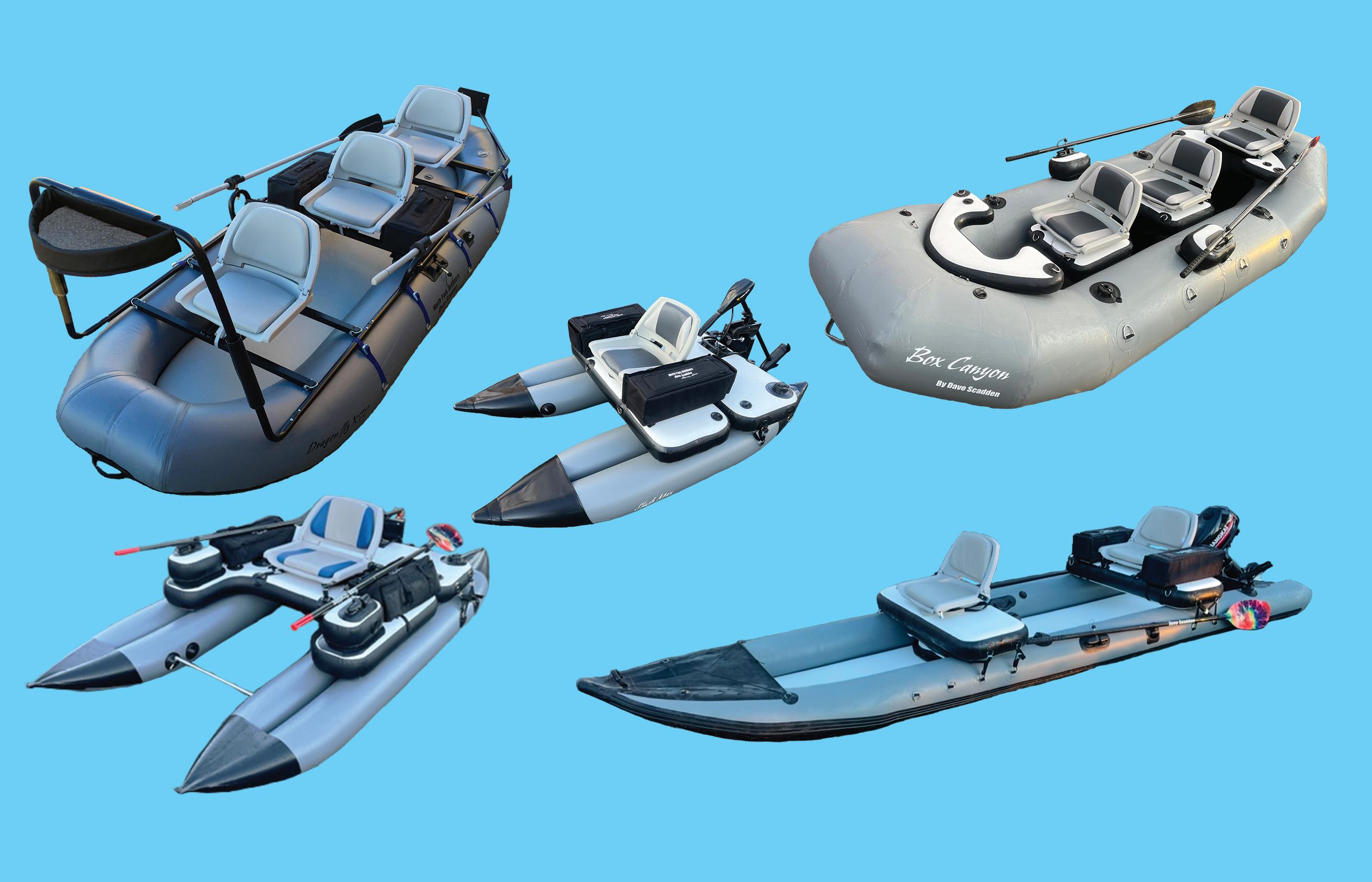





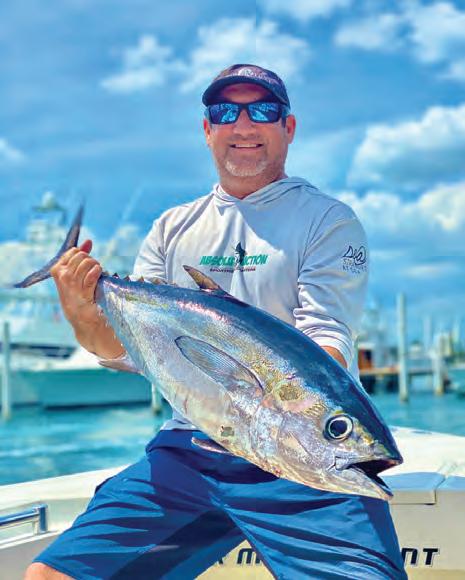












You’re looking at it! Furuno’s award-winning Radar gives you clarity & target separation like no one else. Don’t take our word for it. See for yourself. Scan here, and we’ll show you! DRS4DNXTDRS6ANXT




